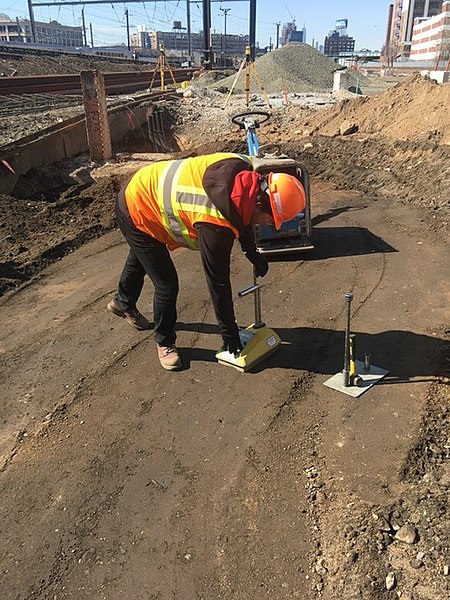Soil can be defined basically as the loose surface material that covers the surface of the land which provides support structurally to plants and serves as a major source of nutrients to them.
It consists of components like organic matter and inorganic particles. There are various types of soil: Loam, Clay, Sand, Silt, etc. and these types bring about the need for soil testing.

Each type of soil has its basic components and physical characteristics which either makes it either good or bad depending on the purpose it’s required for. These physical components include:
Soil testing is determining the properties and organic components of a particular soil. This comes with various importance especially when the said soil is to be used for either agriculture or construction.
Soil testing is one of the basic things to be done before embarking on any project which involves drilling of the hole to a certain depth into the ground to be able to determine its properties.
These soil compositions vary based on the type of soil, also, climate change can sometimes affect the report.
In construction as said earlier, soil testing comes before any other project is done on the site. Soil testing is the first step in construction planning to ensure whether the plot of land is suitable for constructing any structure to avoid dreadful phenomena in the future.
The various types of soil tests help in determining whether the soil in the particular site is strong and suitable for what’s to be constructed on it.
Some of these tests are done on the site while some are carried out in the laboratory. This article takes us through the various types of soil tests there is:
Gravity test refers to the amount of water and solid properties present in the soil. It is conducted using several methods like a gas jar, density bottle, measuring flask, etc. It helps in determining the level of saturation of the soil and void ratio. The void ratio
means the amount of emptiness and solid present in the soil. This test aids the site engineers in knowing the porosity of the soil and if the soil would be strong enough to support the proposed structure and allow proper drainage.
Soil consists of solid particles and voids filled with water or/and air, therefore, a compaction test is based on the assessment of water content and dry density
relationship of a soil for a specified compaction effort. The degree of the compaction depends on the soil properties, the type and amount of energy provided by the compaction process, and the soil’s water content. The most commonly used compaction test is Proctor’s test and it’s done in the laboratory.
This is one of the most important tests to be done at a construction site. The moisture content is important for the compaction of the soil. It also affects the permeability of the soil. When the moisture content increases, the permeability of soil decreases.
The strength of the soil is greatly affected by the moisture content. This test is done using diverse methods such as calcium carbide, radiation method, alcohol method, and
the oven-drying method which is the most commonly used which involves drying a sample of soil taken in an oven with a particular degree of heat.
The dry density of soil is the weight of soil particles in a given volume of a sample. Its value depends on the void ratio and the soil’s specific gravity.
This value is used to classify soil as dense, medium dense, or loose. The dry density test is done using sand replacement, core cutter, or water displacement methods.